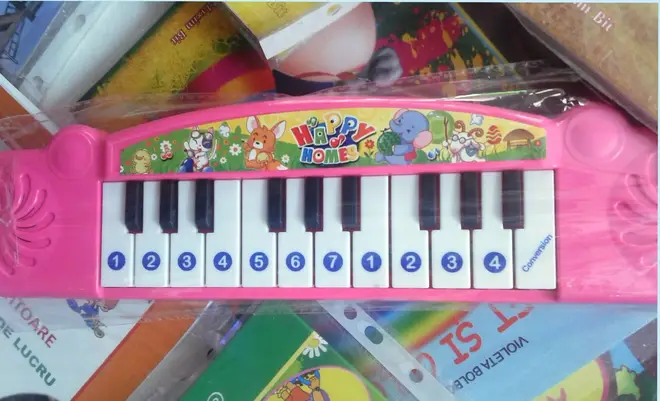A music theory professor shared this keyboard. It raises many questions.
23 February 2021, 17:02

The sight of this child’s instrument will prompt urgent questions, deep unease and doubt.
Think you know your keyboard instruments? If you fancy yourself a Steinway specialist or Casio connoisseur, strap yourself in for this one.
Robert Komaniecki is a music theory professor at the University of Iowa, and a few days ago he placed a certain pianistic perplexity before his social media followers.
Take a look, but trust us, don't look for too long. Every passing second creates new questions. It will suck you in and you may never return to a conventional musical world. You have been warned...
Okay, this is genuinely alarming, and I am dying to attempt to play a scale on it pic.twitter.com/QxLBkZVUTZ
— Robert Komaniecki (@Komaniecki_R) February 22, 2021
“Okay, this is genuinely alarming, and I am dying to attempt to play a scale on it”, wrote Komaniecki.
Here are a few of the things that have been haunting our minds ever since we locked gaze on this particular instrument...
Read more: Why do pianos have 88 keys? >
Beyond the natural minor
For two millennia, keyboard instruments have been configured around the natural minor scale (A-A on the white notes of a piano). It’s this that provides the familiar two black note, three black note octave pattern.
But who says this cannot be challenged by a bold revolution of instrument-making and tonal organisation? Friends, you’ve just been looking at it.
What tonality is it?
Freed from the shackles of those natural minor keyboard conventions, just what type of scale could it be? Without (the pleasure of) hearing this instrument, we can only speculate on the tonal groupings within each octave or set of notes.
Is it a form of 13-note microtonal temperament, we ask? Or does an octave effectively sit on the flattened 8th, with maddening chromatic implications as one moves up the keyboard?
It looks like ascending, it would be some sort of Lydian mode, and then some sort of mad Locrian scale in descent? Both do not quite end in the right place. Brain is hurting.
Another Tweeter suggested it could be based on the pentatonic, or five-tone scale, explaining “F to F is an octave, and the black keys fill in the rest of an octave scale.” This sounds plausible and good for folky improvisations.
The numberings
With a likely key sequence in mind, as far as we can deduce, the numbers suggest a Jon Bon Jovi-esque semi-tone key change at the end of every scale. That feels an awesome prospect.
The artwork is clearly amazing
Because we all need a bespectacled goat and a kitten on a Vespa when we’re learning those Lydian ♯8 scales. Steinway, take note.
It says ‘Happy Homes’. Why?
It states it on the keyboard, and truer words have never been written on an instrument so perplexing. Happy homes have instruments, no matter how unique, flawed, challenging or quietly revolutionary.
Any musical instrument at home promotes music-making, experimentation, and makes us explore and think differently. What a great thing.
Read more: Two-thirds of young musicians are practising more in lockdown, study finds >
We thank vocalist Teodora Bârla for the original picture, which she snapped in a local corner store in Romania.
And on that initial post, there's many more genuinely provoking thoughts and observations from Komaniecki's followers. Well worth a look.
















